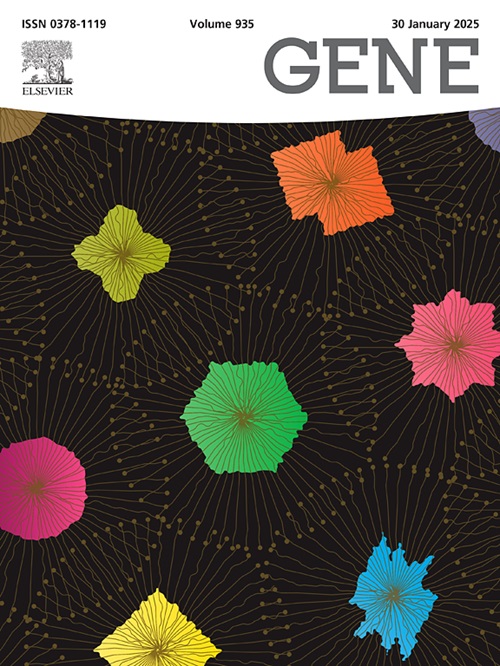KLHL24 associated cardiomyopathy: Gene function to clinical management
IF 2.6
3区 生物学
Q2 GENETICS & HEREDITY
引用次数: 0
Abstract
Background
KLHL24 (Kelch-like protein 24) is a significant component of the ubiquitin–proteasome system (UPS), involved in regulating protein turnover through targeted ubiquitination and degradation. Germline mutations in KLHL24 gene have been known to cause Epidermolysis Bullosa Simplex characterized by skin fragility but has recently been found to cause Cardiomyopathy.
Main body
Various cardiomyopathies, including hypertrophic cardiomyopathy and dilated cardiomyopathy, leading to abnormal protein degradation and affecting the stability and function of essential cardiac proteins which finally results into structural and functional abnormalities in cardiac muscle. In this review, in order to understand the disease association of germline mutations of KLHL24, we summarize all the studies performed with KLHL24 gene including studies from 2016 when KLHL24 was first identified to be associated with epidermolysis bullosa simplex till the recent studies in 2024 by using keywords such as KLHL24 gene, hypertrophic cardiomyopathy, dilated cardiomyopathy and epidermolysis bullosa simplex. Furthermore, we explored the proposed molecular mechanisms and pathophysiologies of KLHL24 associated diseases. Patients with KLHL24 mutations were usually presented with variable clinical symptoms. The main clinical presentations have been cutaneous lesions, cardiac symptoms associated with cardiomyopathies and there have been reports of skeletal muscle weakness and neurological symptoms as well. Current treatments focus on managing clinical symptoms and preventing complications through medications, lifestyle changes, and surgical interventions. In addition, researches have also been conducted cell culture based in vitro studies for reducing the clinical symptoms of KLHL24 associated diseases. However, currently there are no specific clinical trials going on regarding the therapeutic strategies among patients with KLHL24 mutations. Understanding the role of KLHL24 in cardiomyopathies is very important for developing targeted diagnostic approach with therapeutic strategies.
Conclusion
This review emphasizes the importance of KLHL24 mutations as a newly recognized cause of cardiomyopathy, paving the way for improved clinical diagnosis, targeted therapies, and ultimately, for better patient outcomes.
KLHL24相关心肌病:基因功能与临床管理
背景:KLHL24 (kelch样蛋白24)是泛素-蛋白酶体系统(UPS)的重要组成部分,参与通过靶向泛素化和降解调节蛋白质周转。已知KLHL24基因的种系突变可引起以皮肤脆弱为特征的单纯大疱性表皮松解症,但最近发现可引起心肌病。主体:各种心肌病,包括肥厚型心肌病和扩张型心肌病,导致蛋白质异常降解,影响心脏必需蛋白的稳定性和功能,最终导致心肌结构和功能异常。本文以KLHL24基因、肥厚性心肌病、扩张性心肌病、单纯性大疱性表皮松解症等为关键词,对KLHL24基因自2016年首次发现与单纯性大疱性表皮松解症相关的研究到2024年的最新研究进行综述,以了解KLHL24基因种系突变与疾病的相关性。此外,我们还探讨了KLHL24相关疾病的分子机制和病理生理。KLHL24突变患者通常表现为不同的临床症状。主要临床表现为皮肤病变,心肌病相关的心脏症状,也有骨骼肌无力和神经症状的报道。目前的治疗侧重于通过药物治疗、改变生活方式和手术干预来控制临床症状和预防并发症。此外,为了减少KLHL24相关疾病的临床症状,也开展了基于体外细胞培养的研究。然而,目前还没有针对KLHL24突变患者的治疗策略进行具体的临床试验。了解KLHL24在心肌病中的作用对于制定有针对性的诊断方法和治疗策略非常重要。结论:本综述强调了KLHL24突变作为一种新发现的心肌病病因的重要性,为改进临床诊断、靶向治疗以及最终改善患者预后铺平了道路。
本文章由计算机程序翻译,如有差异,请以英文原文为准。
求助全文
约1分钟内获得全文
求助全文
来源期刊

Gene
生物-遗传学
CiteScore
6.10
自引率
2.90%
发文量
718
审稿时长
42 days
期刊介绍:
Gene publishes papers that focus on the regulation, expression, function and evolution of genes in all biological contexts, including all prokaryotic and eukaryotic organisms, as well as viruses.
 求助内容:
求助内容: 应助结果提醒方式:
应助结果提醒方式:


